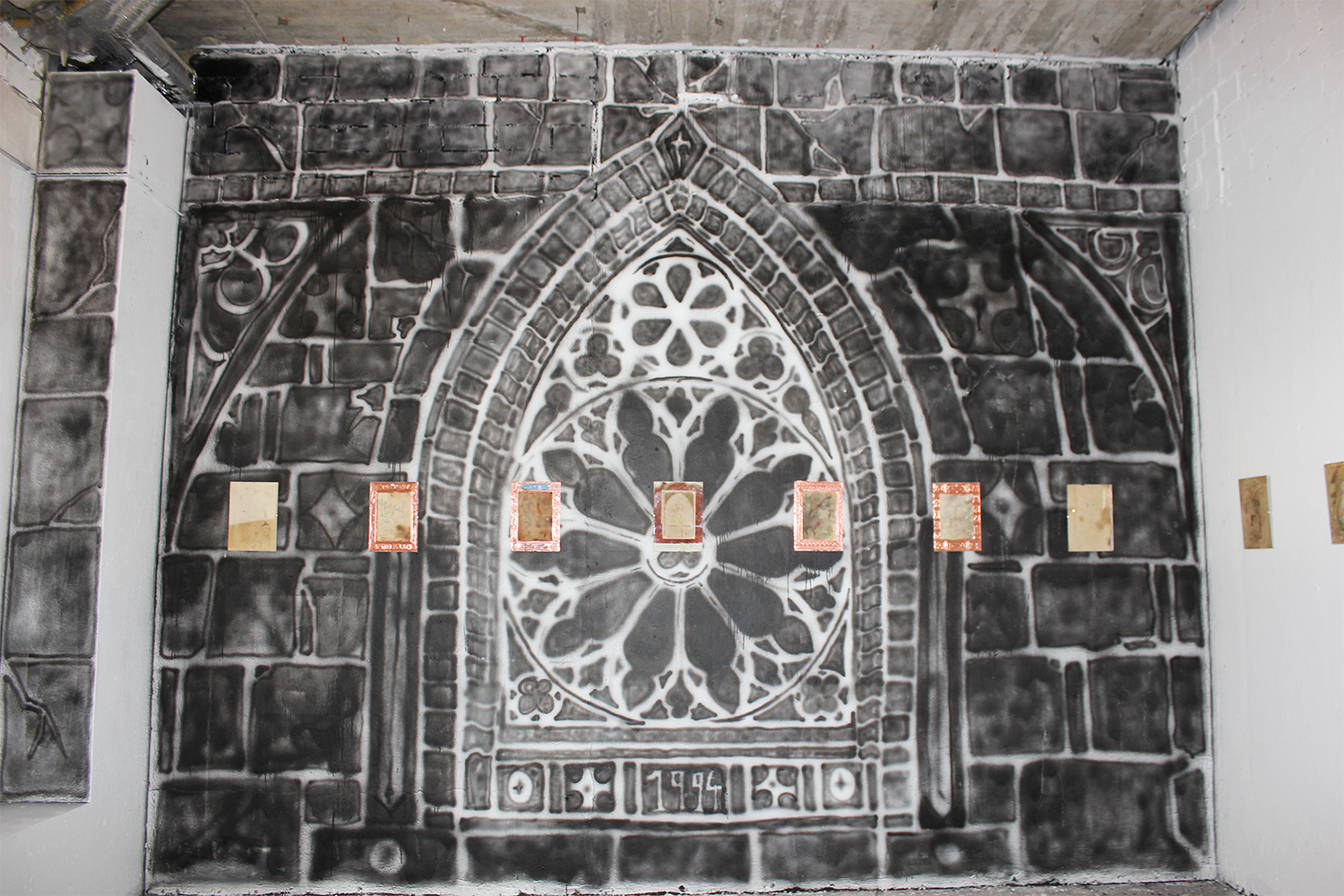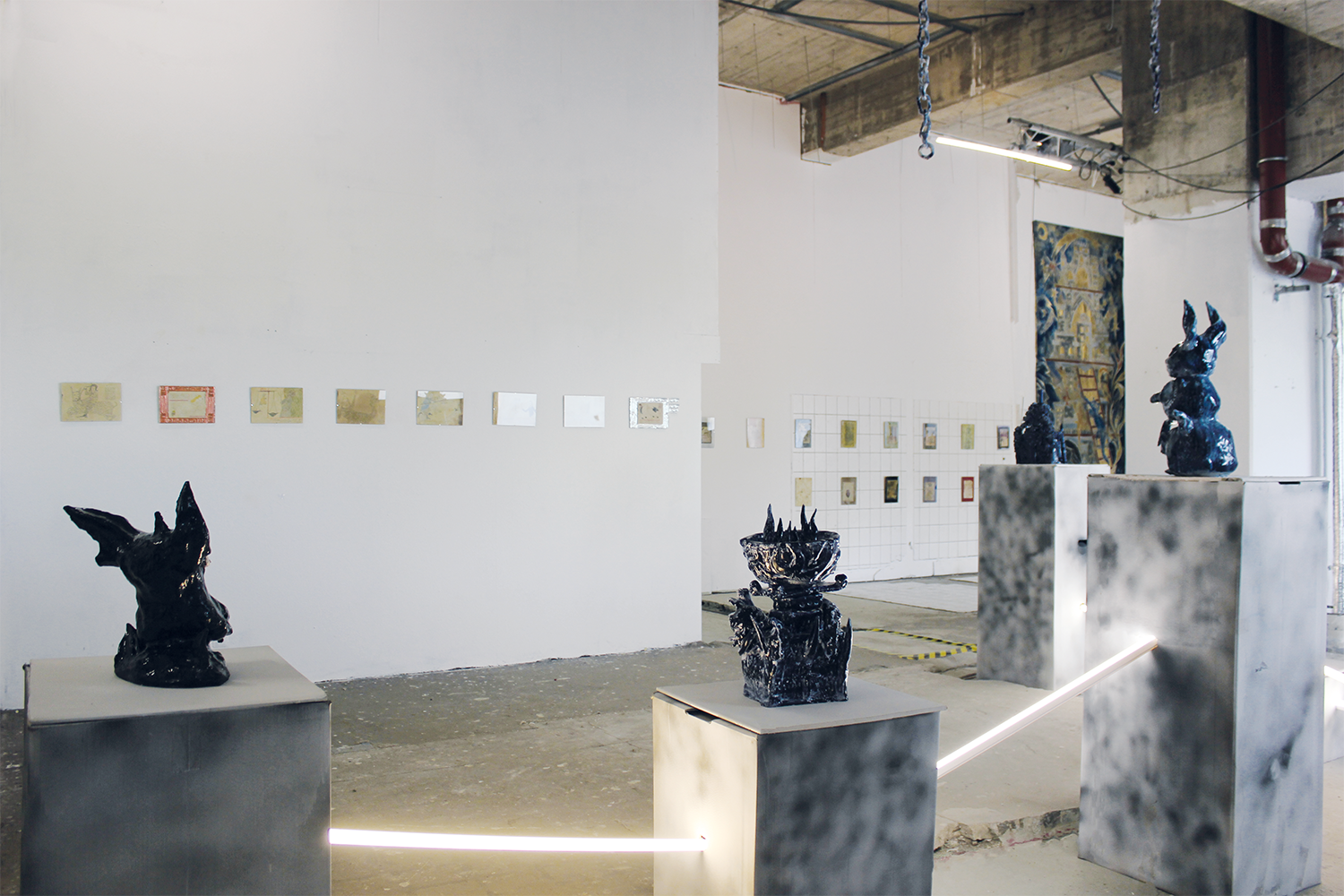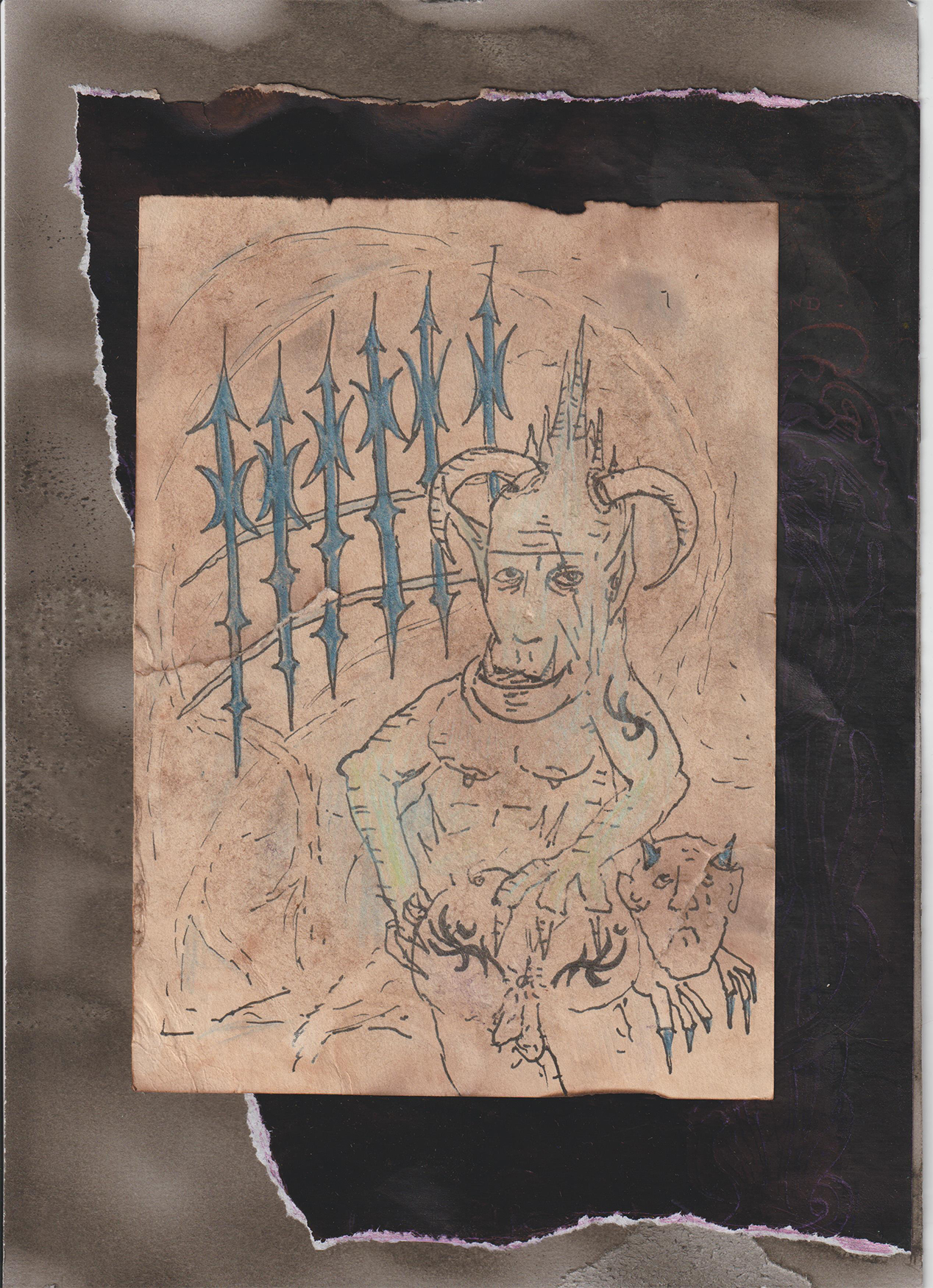FRAGMENTS FROM
A FUTURE PAST
A FUTURE PAST













BUCH DER DÄMONEN
(Book of Demons)
No preliminary drawing with pencil. No grid to determine proportions.
No erasing. No overpainting. The first raw dash counts and specifies the further lines that then lead to the picture. Often not knowing what is emerging, sometimes an idea or hunch, the picture is created in a process of moving from line to line.
The structure and technical application of the miniature paintings found in the Iranian Shahnameh to folk traditions and legends have influenced this series of works significantly, in addition to influence from the Prinzhorn Collection (Heidelberg). The placement of the typeface was studied. A fantasy typeface made up of cryptic characters and artistically playful flourishes was devised, which, however, is not"written" from right to left. The old, fantastic representations are
models and inspiration, they are supplemented and expanded by
modern elements and influences and thus also bring a fine humorous aspect to the drawings.
The content and the origin of these signs and ornaments remain mysterious and uninterpretable for the artist and viewer. They seem to have been adapted from foreign cultures and times. Not really legible, they do not reveal their meaning and thus make it necessary to study the picture more intensively. The stubborn refusal of a document provokes and inspires.
These drawings are deliberately patinated, placed in tea and coffee, then baked and seared. Adding to the distressed paper is the vibrant color of crayons that have been burned out and faded with the help of a hairdryer. All should seem as if these “old papers” had already seen a lot of light and time. Like the imagery, the patina should tell a story to underscore it. This shall lead us to something timeless. The works are meant to seem frayed and blotchy as if many had already tried to decipher the content of these drawings. As if they had bee passed back and forth from questioner to questioner.
(Book of Demons)
No preliminary drawing with pencil. No grid to determine proportions.
No erasing. No overpainting. The first raw dash counts and specifies the further lines that then lead to the picture. Often not knowing what is emerging, sometimes an idea or hunch, the picture is created in a process of moving from line to line.
The structure and technical application of the miniature paintings found in the Iranian Shahnameh to folk traditions and legends have influenced this series of works significantly, in addition to influence from the Prinzhorn Collection (Heidelberg). The placement of the typeface was studied. A fantasy typeface made up of cryptic characters and artistically playful flourishes was devised, which, however, is not"written" from right to left. The old, fantastic representations are
models and inspiration, they are supplemented and expanded by
modern elements and influences and thus also bring a fine humorous aspect to the drawings.
The content and the origin of these signs and ornaments remain mysterious and uninterpretable for the artist and viewer. They seem to have been adapted from foreign cultures and times. Not really legible, they do not reveal their meaning and thus make it necessary to study the picture more intensively. The stubborn refusal of a document provokes and inspires.
These drawings are deliberately patinated, placed in tea and coffee, then baked and seared. Adding to the distressed paper is the vibrant color of crayons that have been burned out and faded with the help of a hairdryer. All should seem as if these “old papers” had already seen a lot of light and time. Like the imagery, the patina should tell a story to underscore it. This shall lead us to something timeless. The works are meant to seem frayed and blotchy as if many had already tried to decipher the content of these drawings. As if they had bee passed back and forth from questioner to questioner.















